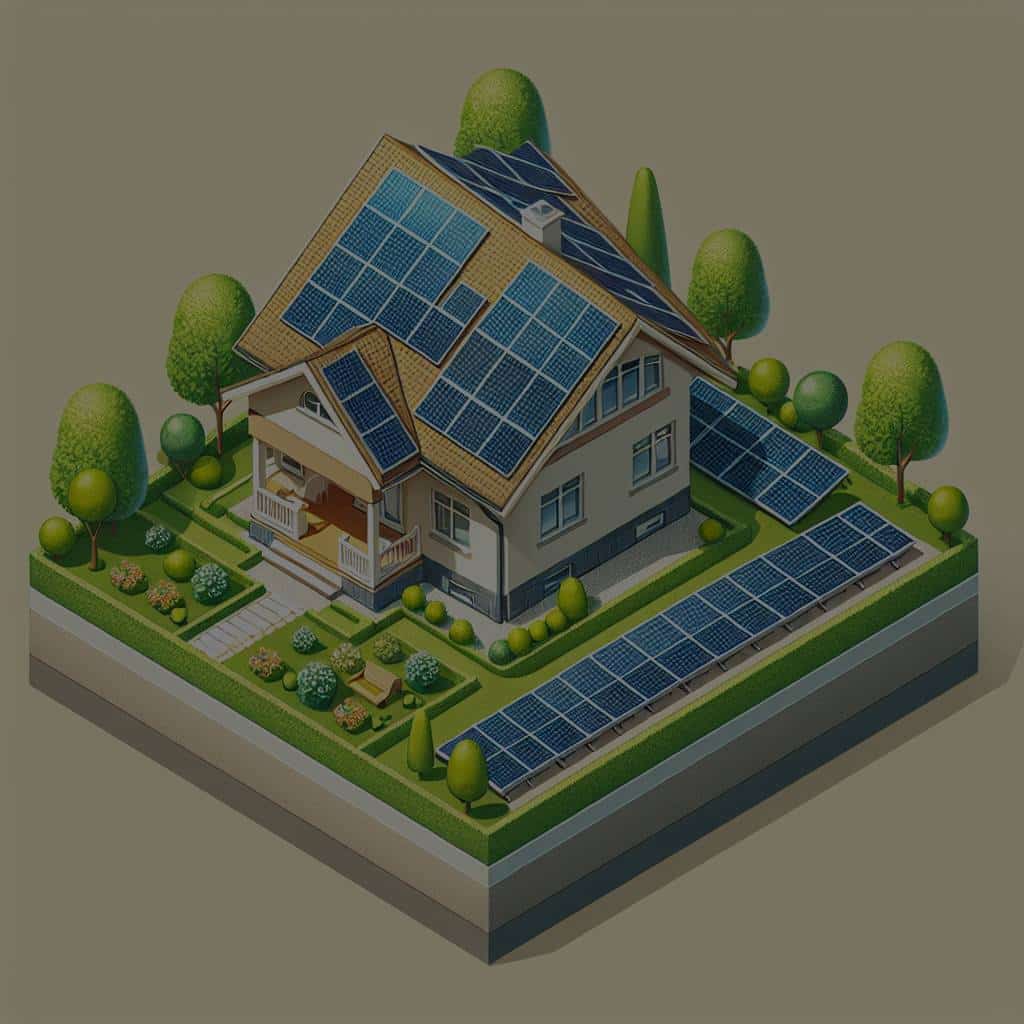What’s the Ideal Configuration for a Rooftop Solar Panel Array on a Small Home?

The move towards renewable energy sources is increasingly gaining momentum, and solar energy is at the forefront of this revolution. Solar power is a popular choice for homeowners looking to reduce their carbon footprint and save on electricity bills. But what’s the ideal configuration for a rooftop solar panel array on a small home? It’s a question that many homeowners and potential solar adopters often find themselves asking. This article aims to shed light on this question by examining factors such as panel tilt and orientation, shading issues, and power needs that determine the ideal configuration.
Understanding Your Power Needs
Before you install solar panels on your rooftop, it’s crucial to first understand your power needs. This not only influences the number of panels you need but also the best configuration for the panel array.
A voir aussi : What Are the Smartest Storage Solutions for a Tiny Laundry Closet?
Your power need is essentially the amount of electricity you consume. This can be calculated by looking at your electricity bill where your usage is usually indicated in kilowatt-hours (kWh). The average small home in the U.S. uses about 900 kWh per month. Therefore, to meet this need, you would require a solar system capable of generating this amount of power.
However, the efficiency of solar panels also comes into play. The average solar panel efficiency is around 15-20%. This means that for every 1000W of sunlight that hits the surface of a solar panel, only about 150-200W is converted into usable electricity. Therefore, to generate 900 kWh per month, you would need around 20-25 panels, considering each panel has a capacity of around 300W.
Sujet a lire : How Can You Design a Low-Cost but High-Impact Guest Bathroom Makeover?
Remember, your power need may fluctuate throughout the year, with more electricity needed during winter months due to heating requirements. Hence, a buffer should be considered when calculating the number of panels needed.
Choosing the Right Panel Orientation
Once you’ve determined your power needs, the next step is to decide on the orientation of your solar panels. The orientation, or the direction that your panels face, plays a vital role in the amount of sunlight they can absorb and thus, the electricity they can generate.
In the Northern Hemisphere, the sun rises in the east, reaches its peak in the south, and sets in the west. Therefore, solar panels should ideally be facing south to capture the maximum sunlight. If south-facing panels are not possible due to the design or structure of your roof, east or west-facing panels can still work, although they might produce less power.
The degree of the tilt of your panels should also be considered. This must be roughly equal to the latitude where you live to ensure maximum sunlight absorption. This can be adjusted seasonally to account for the sun’s changing position in the sky.
Managing Shading Issues
Shading is a significant issue when considering solar panel installation. Shadows falling on your solar panels, whether from trees, chimneys, or neighboring buildings, can drastically reduce the power output of your system.
It’s best to install panels on a part of the roof that gets the most sun exposure throughout the day. However, if shading is unavoidable, consider using microinverters or power optimizers. These devices enable each panel to function independently, so even if one panel is shaded, the others can still function at full capacity.
Choosing the Right Type of Solar Panel
The type of solar panel you choose can also affect the ideal configuration. There are three main types of solar panels: monocrystalline, polycrystalline, and thin-film.
Monocrystalline panels are the most efficient but also the most expensive. They are ideal for homes with limited roof space as fewer panels are needed to produce the required amount of power.
Polycrystalline panels, while less efficient than monocrystalline panels, are more affordable. They might be a better choice for homes with ample roof space where efficiency is not a major concern.
Thin-film panels are the least efficient and least expensive. They are lightweight and flexible, making them suitable for roofs that cannot sustain the weight of heavier panels.
Accounting for Local Regulations and Incentives
Finally, it’s important to consider local regulations and incentives when planning your solar panel configuration. Some locales may have restrictions on the size or placement of solar panels. Conversely, there may be financial incentives available for installing solar panels, such as tax credits or rebates.
It’s also essential to check with your local utility company about their net metering policy. Net metering allows you to feed excess power generated by your solar panels back into the grid, effectively reducing your electricity bill.
In conclusion, the ideal configuration for a rooftop solar panel array on a small home is largely dependent on your power needs, roof orientation, shading issues, the type of panels chosen, and local regulations and incentives. By carefully considering these factors, you can ensure that your solar panel array is optimally configured to meet your energy needs and save you money in the long run.
The Impact of Weather on Solar Panels
Understanding the potential impact of your local weather conditions on your panels is another fundamental aspect in configuring your solar panel array. The weather elements can significantly affect the performance and lifespan of your solar panels.
Typically, solar panels perform best in clear, sunny weather. However, they can still generate electricity on cloudy or overcast days, albeit at a lower rate. It’s important to note that solar panels do not harness heat; instead, they convert sunlight into electricity. Therefore, they can even perform more efficiently in colder temperatures as high temperatures can reduce their output.
Extreme weather conditions like hail and snow can potentially damage your panels. Therefore, when selecting a solar panel, it’s crucial to choose one that has been tested and rated to withstand the harshest weather conditions typical in your area. Some panels are equipped with features like snow guards to avoid snow accumulation or are built to resist high wind speeds.
Moreover, regular maintenance and cleaning can help mitigate weather-related issues. For instance, properly cleaning the panels after a dust storm can prevent potential damage and maintain optimal performance.
Efficiency Over Time and Panel Degradation
Regardless of the initial configuration and efficiency of your solar panels, it’s essential to keep in mind that solar panels’ efficiency decreases over time, a process known as degradation.
Solar panels, like all other electronic devices, slowly lose their ability to convert sunlight into electricity over time. On average, solar panels degrade at a rate of about 0.5% – 1% per year. This means that after 20 years, your panels could be operating at around 80%-90% of their initial capacity.
However, the rate of degradation can be influenced by several factors including the quality of the panels, the conditions under which they operate, and how well they are maintained. High-quality panels usually degrade slower, so investing in good quality panels could save you money in the long run by reducing the frequency of replacements.
Regular maintenance can also slow down the degradation process. This includes cleaning the panels regularly to remove dust and debris and having them inspected by professionals to resolve any issues promptly.
Closing Thoughts
The path to finding the ideal configuration for a rooftop solar panel array on a small home is marked by understanding your power needs, choosing the right panel orientation, managing shading issues, selecting the right type of solar panels, accounting for local regulations and incentives, considering the impact of weather on your panels, and factoring in efficiency over time and panel degradation. Although this may seem complex, it is worth the effort. Solar energy not only reduces your carbon footprint and saves on electricity bills, but it also adds value to your home. As solar technology continues to evolve, homeowners are availed with more efficient and cost-effective options, making the switch to solar even more attractive.
